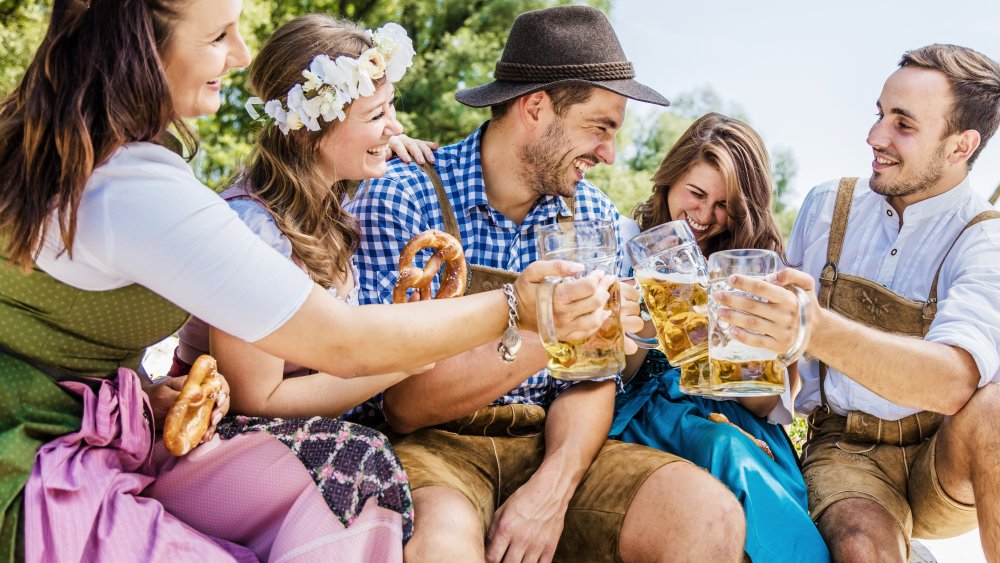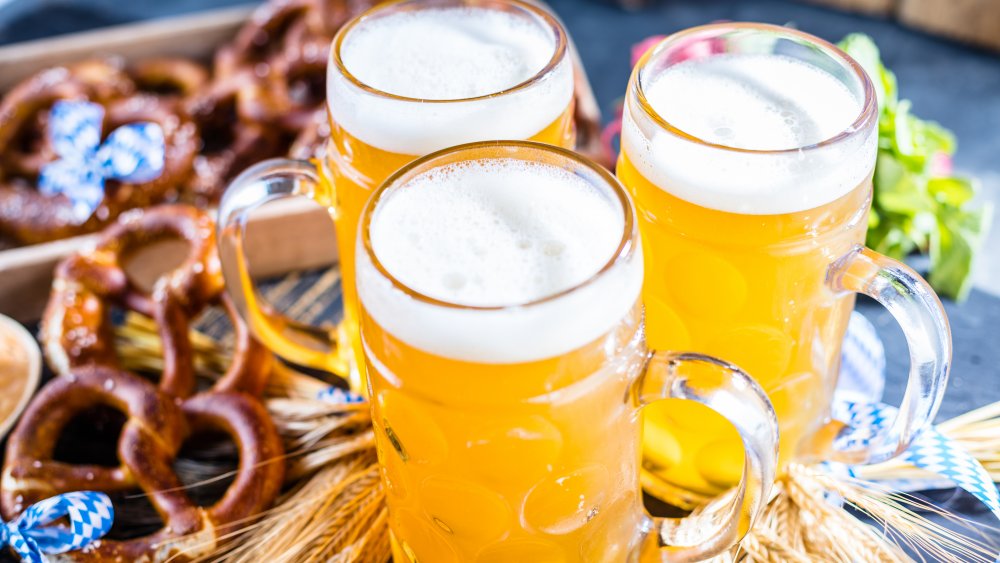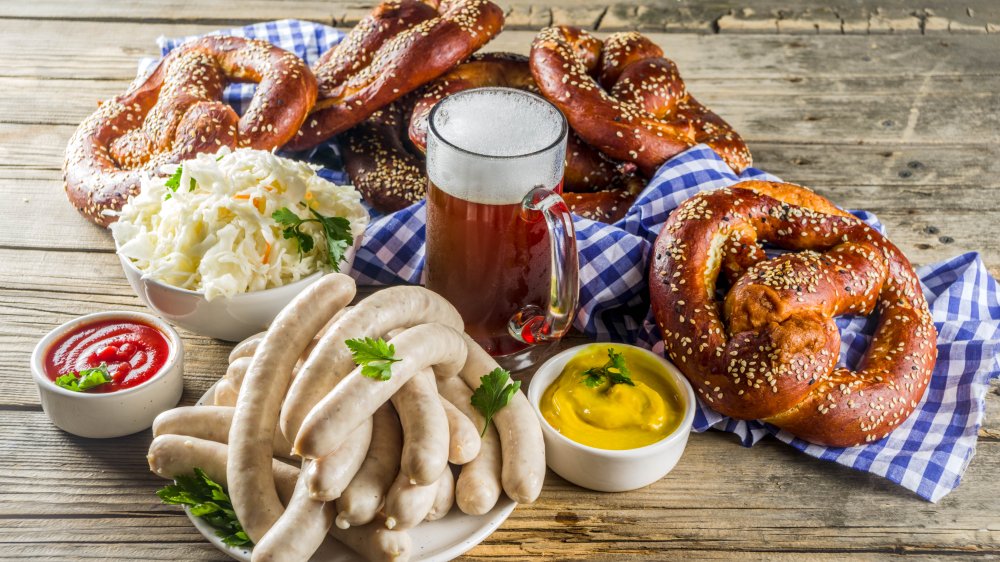The Untold Truth Of Oktoberfest
As soon as you think about Oktoberfest, it's not uncommon for pints of beer, pretzels, and lederhosen to come to mind. But Oktoberfest is a lot more than the run-of-the-mill cliches you've come to know, even though they are a part of the festivities.
The truth of the matter is that the holiday began in 1810 as a wedding celebration of the Bavarian Crown Prince Ludwig to Princess Therese of Saxony-Hildburghausen, according to Time. The inaugural celebration included horse racing, but the drinking and eating you probably already associate with the festival too. Though the wedding itself was October 12th, the annual event runs for around 16 days, roughly from September 16th until October 3rd each year. Oktoberfest was originally held in Munich, and it continues to be celebrated there in the six original breweries that served the first event among others.
If you can't pull on your lederhosen and head into one of Munich's beer halls during Oktoberfest, then you can always celebrate at home. There are tons of great Oktoberfest beers to try like Ayinger Oktober Fest-Märzen or Von Trapp Oktoberfest, according to Thrillist. You can make a nice spread of Bavarian treats too. But, you still might want to know the history behind the holiday.
Beer really is a big part of Oktoberfest
In Germany, the Oktoberfest label can only be used for beers produced at six Munich breweries, a restriction that doesn't exist in the U.S. However, they don't have to have a specific style. Instead, Oktoberfest beers are designated relative to the time at which they are made. According to Food and Wine, the primary factor that plays into Oktoberfest beers is that they are brews made specifically to be consumed during the last couple of weeks of September and a few early days in October. They're beers made to be served for the holiday.
While most of the Oktoberfest beers are lagers, there are a few other styles you might encounter depending on where you are celebrating. "When talking about Oktoberfest, it's important to understand that the beer has changed since the first festival in 1810," says Goose Island R&D Manager Mike Siegel. Most German Oktoberfest beers are German lagers. But in the United States, the style tends to be a darker, sweet red known as a Marzen. "[Back in 1810], the beer of Munich was Dunkel, a dark lager, and by 1872, the amber beer [aka Marzen] we are more accustomed to was introduced," Siegel said. This tends to be more closely based on the old, original beer that was served.
And the snacks are more than pub food
No Oktoberfest is complete without snacks that go well with beer. Though you likely already have a few favorites when it comes to the drinking munchies, you might want to step up your spread with some traditional dishes. According to The Spruce Eats, Laugenbrezeln, otherwise known as Brezen, are the soft Bavarian pretzels you've seen so often associated with Oktoberfest. They are a traditional pick, too, served with butter. Another common choice is bratwursts, or German sausages, which are served with sauerkraut and whole-grain mustard.
A really traditional pick is spätzle, or homemade egg noodles covered in a sauce, often cheese sauce, and onions. If that isn't enough, German pickles and apple strudel are also very traditional options. Fortunately, you can buy almost all of these delicacies at international supermarkets or even during Aldi's German week that takes place around the time of Oktoberfest. So, now that you know the story behind Oktoberfest and how it's done in Germany, all you have to do is some grocery shopping. You might, however, have trouble finding the lederhosen at your local grocer.


